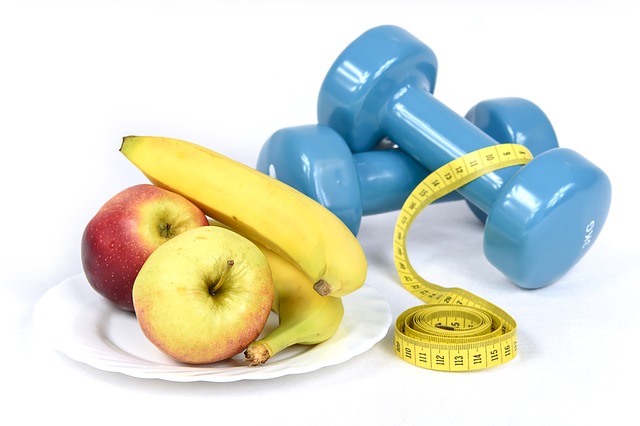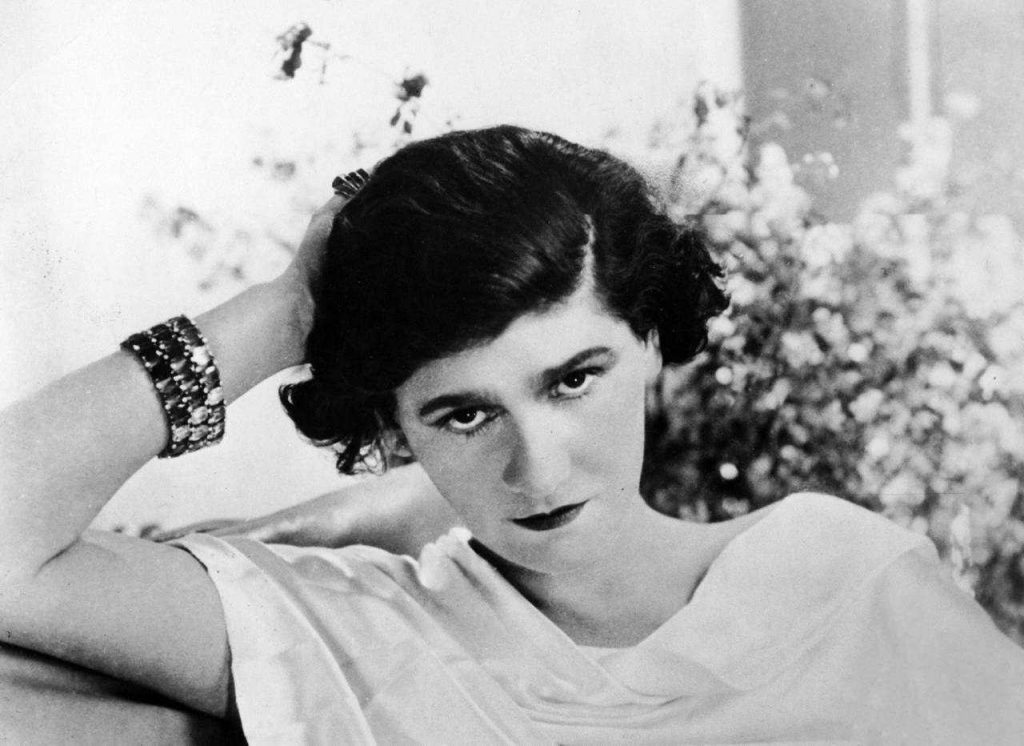
Today we use bronzer for the skin looks darker than its natural state. It can be in the form of cream or powder to achieve an appearance considered healthy. As he would have just returned from a vacation in the Caribbean. That skin tone giving the idea of being exposed to the sun, in one is something enviable to many people. But did you know it wasn’t always like that?
It is amazing how with the passing of the tastes, fashions and customs change. In the past, they relied more on formed opinions. The beautiful and the ugly was a matter of opinion and tradition.
Nowadays fashions are much more by a matter of health. For centuries the human being never questioned the use of aerosols and today we are suffering the consequences. We also adapt our tastes and opinions for the reasons we have to take care of those bad consequences.
The new styles were replacing the previous ones. As an example the length of the dresses or the use of wigs, etc
New Era Fitness
Something different happens today. We are in the Fitness Era. A lot of exercises of different types, there is something for all tastes and also the food has changed a lot. And about the food, we have to make a small parenthesis. Today there is a contrasting situation.

On the one hand, we have the so-called “junk food” which is a meal high in fat and calories, zero nutritious, also called passing meals or fast foods. They are delicious, tell yourself in passing. And on the other all the movements of vegetarian foods, vegan, organic and often low-calorie foods. Most very nutritious, low sodium and very healthy. They are also very rich but it is a wave that must be learned to savor and enjoy them but there is no doubt that they are better for the organism.
Tan skin color
One of the thoughts that changed with the passing of time was the message that society wanted to convey because of the skin tone they had.

At the time of the European aristocrats, white skin was a symbol of distinction, it showed belonging to a high social class, that can be verified by observing the paintings in the reference museums of that time. Everyone in the upper class had that very white skin tone. They even made up with white powder to accentuate it. Sometimes Galas.
You can understand why when we think the working class is poorer. They used to have a tanned skin most of the year, because they did their work outdoors and under the bright sun, without taking protection or being careful. Surely those of the upper class wanted to make a difference with those of the lower class. That was away. There was so much concern to keep his skin white that the use of umbrellas, gloves, and hats, away from the sun’s rays completely to avoid tanning.
You may also like…
Changes with the Industrial Revolution
In the eighteenth century with the Industrial Revolution and the arrival of factories, the working classes were sheltered from the sun, but they were also overcrowded in crowded homes, fleeing the smoke and soot of British streets, with their children developing rickets and other bone deformities. That was when Dr. Theobald Palm discovered that sunlight was crucial for bone development.
Many were the doctors who began to prescribe and recommend to their patients to take ‘sunbaths’ and thus fight numerous diseases. Some of them anemia, depression and bone strengthening, etc.
Despite the many benefits that the sun brought, members of high society continued to resist having their skin tanned and left this for the lower classes and the sick (under medical prescription).
How did tan skin color reach high society?
But there came a time when, overnight, it was decided that being pale and having a whitish skin was no longer attractive, becoming sun-tanned skin among the most exclusive circles, something that, at The healthy pair was visually beautiful.
With the outbreak of the First World War, there was an important social change: women began to go to work and use spaces in offices or stores, but the trend continued, paler, the better. Everything changed thanks to the revolutionary fashion designer, Coco Chanel.

Credits by By Time / Getty – Hal Vaughan. Sleeping with the Enemy: Coco Chanel’s Secret War. Random House (2011), p. 20., PD-US, https://en.wikipedia.org/w/index.php?curid=34140149
Coco Chanel went on a Mediterranean cruise aboard the yacht of the Duke of Westminster and when he returned he saw it more toasted than usual. It had burned, but it was a happy find, as the photographs of his landing in Cannes set a new standard of beauty. Coco Chanel was one of the people who set a trend and absolutely everything he did, designed or said became fashionable among the population from one day to the next.
As of this moment, there was a radical change. Women set aside umbrellas, to spend more time in the sun.
That trend thrived throughout the twentieth century and the idea that tanned skin is a healthy appearance continues to this day.
Is tanning just a matter of fashion?
A recent work of researchers from Harvard University, published in the prestigious magazine “Cell”, allows us to better understand this phenomenon.
Ultraviolet light damages the genetic material (DNA) in our skin and that sets in motion a defensive response and the production of proopiomelanocortin (POMC). The funny thing is that the POMC also derives beta-endorphin, which is transferred by blood from our skin to our brain producing a pleasant sensation in us.
So, when we expose ourselves to the sun, our skin tells our brain: I like this! Therefore, beyond fashion, the “natural” is that we like, to a greater or lesser extent, sunbathing.
Advantages of exposing ourselves to the sun
Sunlight improves our mood. That is because the sun’s rays are essential to make serotonin, a neurotransmitter related to the feeling of well-being.
Another benefit that exposes us to the sun is that the sun’s rays stimulate the development of vitamin D. When the sun’s rays come into contact with the skin they cause an enzyme to transform, which results in the production of 90% of Vitamin D we need.
Vitamin D Advantages
Vitamin D, in turn, benefits us in many things:
- Strengthens your bones and drives away osteoporosis: calcium is essential for bones, but no matter how much you incorporate it into your body through diet, vitamin D is responsible for being fixed in the bones.
- Keeps tension at bay: this vitamin reduces parathyroid hormone levels, responsible for regulating blood pressure. Therefore, when sunbathing, the tension drops.
- Activate your defenses: T lymphocytes, a type of white blood cells responsible for defending the body against infections, need this vitamin to do their job properly.
- Regulate your biorhythm: sunlight regulates our circadian rhythms, which are involved in sleep and mood, among other things.
- Improve skin conditions such as psoriasis and acne.
It should be noted that to receive these benefits it is not necessary to be directly exposed to the sun’s rays for hours. With 15 minutes a day (exposing the face and arms is enough), several times a week to ensure the correct synthesis of this vitamin.
Disadvantages and dangers
As for the disadvantages or dangers of solar rays, these are related to excessive and unprotected exposure.
The most common are:
- Produce spots and premature aging,
- eye damage and
- skin cancer.
So if we want to have a tan tone as a result of exposing ourselves to the sun’s rays we should always use sunscreen factor creams according to our skin. To define what is the right protective factor for us it is better to consult a dermatologist.
How do we tan?
Did you know that melanin is the pigment that determines the color of people’s skin? It is also the pigment that produces the tan color. For example, in albino people melanin is not produced, so they do not have pigmentation.
Let’s understand the natural tanning process. This is a skin protection mechanism. Let’s see how it works.
UVAs are the rays that cause melanin to be darker and tan the skin. They do not penetrate deeply into the skin.
UVBs have a greater ability to penetrate the skin and have the ability to stimulate melanocytes to produce melanin. This melanin production is to protect the skin from cell damage. These, when they reach deeper, are what can cause burns.
The job of melanin is to absorb UVB. That chemical reaction obscures the melanin that in turn darkens the skin. Once melanin production has begun, at 36 or 48 hours, the skin tan and the danger of burns decreases.
This is one of the reasons that the first 24 hours are the most dangerous for burns. Since the cells have not had time to produce all the necessary melanin.
When there is an overexposure to UV rays, there comes a point where melanin cannot absorb more radiation. That’s what causes redness and burns.
More melanin … More tan color
The more melanin we have in the body, the darker the skin. That is why when the sun has already taken a lot of it and is very dark, there is no danger of burns and less risk of destruction of the cells. The cells have to be given time to complete 100% of the production of melanin. That is why tanning should be progressive, giving that time and protecting the skin with sunscreens.
We would like to get brown quickly, but the body needs its production time of that melanin, in sufficient quantity. So the idea is to start with small exhibitions more regularly.
Tan without damaging
Here are some tips to take advantage of the summer and finish it with a beautiful color without causing damage to your skin.
The superficial layer of the skin is renewed regularly and once it disappears, the tan also leaves. To make this process slower, you need to keep the skin well hydrated. Be sure to use body lotions regularly. You should also avoid very hot showers because they can easily dehydrate the skin.
Hydrating the skin from the outside is essential, but it is also moisturizing it from the inside. Be sure to drink enough water and feed the body with foods that contain a lot of water. Also, it is said that foods rich in beta-carotene such as carrots, mango, and sweet potato intensify the color of the tan and give a golden glow to the skin.
The best way to get a balanced tan is to do what Free Athletes love: being active! It doesn’t matter if you go jogging on the beach. While you move, the whole body is exposed to the sun and tan evenly.
It may sound a bit like a paradox, but for the tan to last, you should also go to the shade from time to time. This will give the skin a rest to recover from the sun, prevents sunburn and protects you from overexposure to sunlight.
Changes in the planet bring changes in customs
But as we mentioned at the beginning, our planet’s ozone layer was damaged due to excessive use of chemicals. The reduction of this layer has brought us problems such as the increased risk of cancer and other negative effects of direct exposure to sunlight.
Following this problem, other ways of staying tanned were emerging. There are bronzers that we can use on our skin to have that nice summer tone. The first tanning creams were very heavy and difficult to absorb. At present the formulas have taken a turn and it is no longer necessary to remain “sticky”. From facial mists, mousses, sun powders, colored serums, self-tanning milk, leg makeup, airbrush self-tanning…
It is important to choose the brands of laboratories experienced in cosmetics. Do not get carried away only for cheap prices. The skin is one of the largest organs of our body and is the one that protects us from everything. You have to treat it very well.
Bronzer meaning
It is a cream or powder that you put on the face and body so that your skin looks tanned by being in the sun. Since the purpose of a bronzer is to subtly darken the skin, the tone you choose will depend on the color of your skin. In general, it should only be 1 or 2 shades darker than your natural skin tone. Try a little on the inside of your wrist to make sure it meets what you want.



